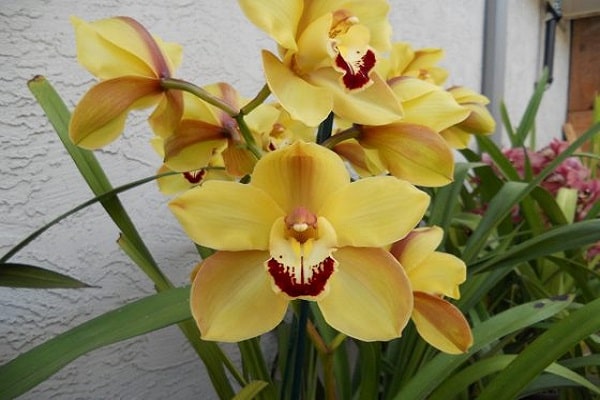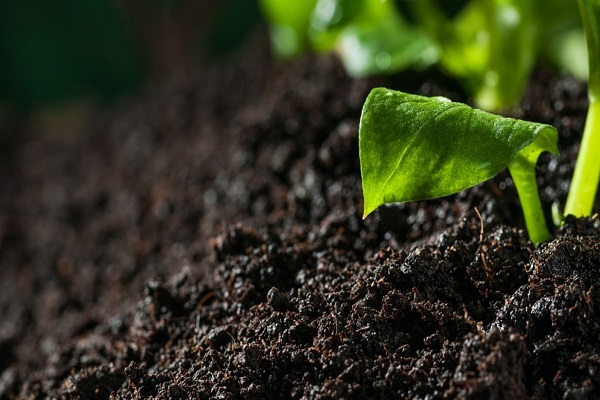Cymbidium orchids are beautiful flowering plants that thrive in outdoor environments. They are often seen in gardens, patios, and balconies. How to care for cymbidium orchids outdoors? Requires attention to detail and careful monitoring of their growing conditions. This guide will provide essential tips and tricks for caring for cymbidium orchids outdoors.
You will learn about their preferred growing conditions, watering and fertilizing requirements, pest and disease management, and other helpful information to help your cymbidium orchids flourish outdoors. With the proper care, your cymbidium orchids will reward you with stunning blooms and add a touch of elegance to your outdoor space.
Quick Navigation
Choosing The Right Location for Cymbidium Orchids

Cymbidium orchids are beautiful and popular flowering plants that brighten any indoor or outdoor space. However, choosing the right location is essential to ensure their proper growth and health. Here are some factors to consider when selecting a spot for your cymbidium orchids:
Light
Cymbidium orchids require bright, indirect light to grow and bloom. They can tolerate some direct sunlight, but too much can cause their leaves to burn. A north-facing window or a spot with filtered light is ideal for these plants.
Temperature
Cymbidium orchids prefer cooler temperatures than most other orchid species, with a daytime temperature range of 60-75°F (15-24°C) and nighttime temperatures dropping by around 10°F (5°C). They can tolerate temperatures as low as 50°F (10°C) at night but should not be exposed to temperatures below 40°F (4°C).
Humidity
Cymbidium orchids require high humidity to thrive, around 50-70%. You can increase the humidity around your plants by placing a tray filled with water and pebbles underneath the plant or using a humidifier.
Air Circulation
Cymbidium orchids need good air circulation to prevent the buildup of stagnant air around the plant. This can lead to fungal or bacterial infections. A fan or an open window can provide the necessary air movement.
Watering And Drainage
Cymbidium orchids need regular watering but can be sensitive to overwatering. They require well-draining soil and pots with drainage holes to avoid waterlogging, which can cause root rot.
Considering these factors, you can choose the perfect location for your cymbidium orchids to thrive and produce beautiful blooms.
Ensuring Proper Drainage and Soil Mix

Ensuring proper drainage and soil mix is crucial for maintaining healthy plants and a thriving garden. Drainage is essential because it prevents water from accumulating around plant roots, which can lead to root rot and other problems. The soil mix is equally important, providing the necessary nutrients and How to care for cymbidium orchids outdoors?
A well-draining soil mix must allow excess water to flow easily to ensure proper drainage. This can be achieved by adding perlite, vermiculite, or coarse sand to the soil mix. It is also essential to ensure that the pot or planting area has adequate drainage holes to allow excess water to escape.
Ensuring the soil is evenly moist but not soggy is crucial when planting. Overwatering can lead to waterlogging, which can suffocate roots and cause plant death. It is important to water plants deeply but infrequently to prevent this, allowing the soil to dry out slightly between waterings.
Ensuring proper drainage and soil mix is essential for creating a healthy and vibrant garden. By using a well-draining soil mix and providing plants with the necessary nutrients and support, gardeners can help their plants thrive and flourish.
Providing Adequate Sunlight and Shade
Providing adequate sunlight and Shade is essential to maintaining a healthy and thriving environment for plants, animals, and humans. Sunlight is critical for photosynthesis, the process by which plants produce their food, and is also necessary for making vitamin D in humans. How to care for cymbidium orchids outdoors? However, too much direct sunlight can be harmful and cause sunburn, dehydration, and even death in some organisms.
On the other hand, Shade protects from excessive heat and direct sunlight, which can be particularly important during hot summers or high temperatures. Shade can also help prevent evaporation, which can help maintain soil moisture levels and avoid water loss.
Watering Cymbidium Orchids Outdoors
Cymbidium orchids are famous for their beautiful and long-lasting blooms, How to care for cymbidium orchids outdoors? These orchids are also known for their hardiness, making them suitable for outdoor growing in many climates.
The watering frequency will depend on various factors, including the weather, the potting medium, and the container size. In general, cymbidium orchids should be watered when the top inch of the potting medium is dry to the touch. During hot or windy weather, they may require more frequent watering, while during cooler or rainy periods, they may need less.
It’s also crucial to water cymbidium orchids in the morning or early afternoon to allow excess moisture to evaporate before nightfall. This can help to prevent problems with fungal diseases and pests that thrive in moist environments.
Protecting How To Care For Cymbidium Orchids Outdoors
Cymbidium orchids are popular ornamental plants known for their beautiful and long-lasting blooms. However, like all plants, they are susceptible to various pests and diseases that can damage or even kill them if left untreated. To ensure the health and longevity of your cymbidium orchids, it is essential to take steps to protect them from these threats.
Another critical step is to keep your growing area clean and debris-free. Fallen leaves and other organic matter can provide a breeding ground for pests and diseases, so How to care for cymbidium orchids outdoors? You can also use natural pest control methods, such as introducing beneficial insects like ladybugs or lacewings to your growing area or spraying your plants with insecticidal soap or neem oil.
Frequently Asked Question
Can Cymbidiums Take Full Sun?
Cymbidiums are an orchid that can tolerate full sun but usually prefer bright, indirect light. If exposed to too much direct sunlight, their leaves may become yellow or brown, and their blooms wilt. It’s best to provide Shade during the hottest parts of the day to protect them from sunburn.
Can Cymbidium Orchids Grow Outside?
Yes, cymbidium orchids can grow outside in certain climates. They are relatively hardy and can tolerate cool temperatures, making them famous for outdoor cultivation in areas with mild to moderate winters. However, they may require protection from extreme cold or heat, and their specific growing conditions may vary depending on the location and climate.
Where Is The Best Place For Cymbidium Orchids?
The best place for cymbidium orchids is a sunny location with indirect sunlight and with temperatures ranging between 60-80°F (15-27°C) during the day and 40-50°F (4-10°C) at night. They also need high humidity levels and good air circulation.
How Do I Get My Cymbidium Orchid To Bloom Again?
To get your cymbidium orchid to bloom again, you should provide it with the right growing conditions. This includes placing it in a location with bright, indirect sunlight, keeping the soil moist but not waterlogged, and fertilizing it regularly with a balanced orchid fertilizer
Is Epsom Salt Good For Cymbidium Orchids?
Yes, Epsom salt can be beneficial for cymbidium orchids. It contains magnesium and sulfate, which are essential nutrients for plant growth. Magnesium helps to promote chlorophyll production, while sulfate supports the development of proteins and enzymes.
Conclusion
How to care for cymbidium orchids outdoors? Caring for cymbidium orchids outdoors requires attention to their specific needs for light, water, temperature, and fertilization. Providing them with the appropriate growing conditions will encourage healthy growth and beautiful blooms. With proper care, cymbidium orchids can thrive outdoors and provide you with years of enjoyment.

My name is Md Deloar Hossain and I’m the creator of Club Gardening, designed for all your gardening ideas, gardening product reviews, and a place to help you find the best gardening experience possible.


